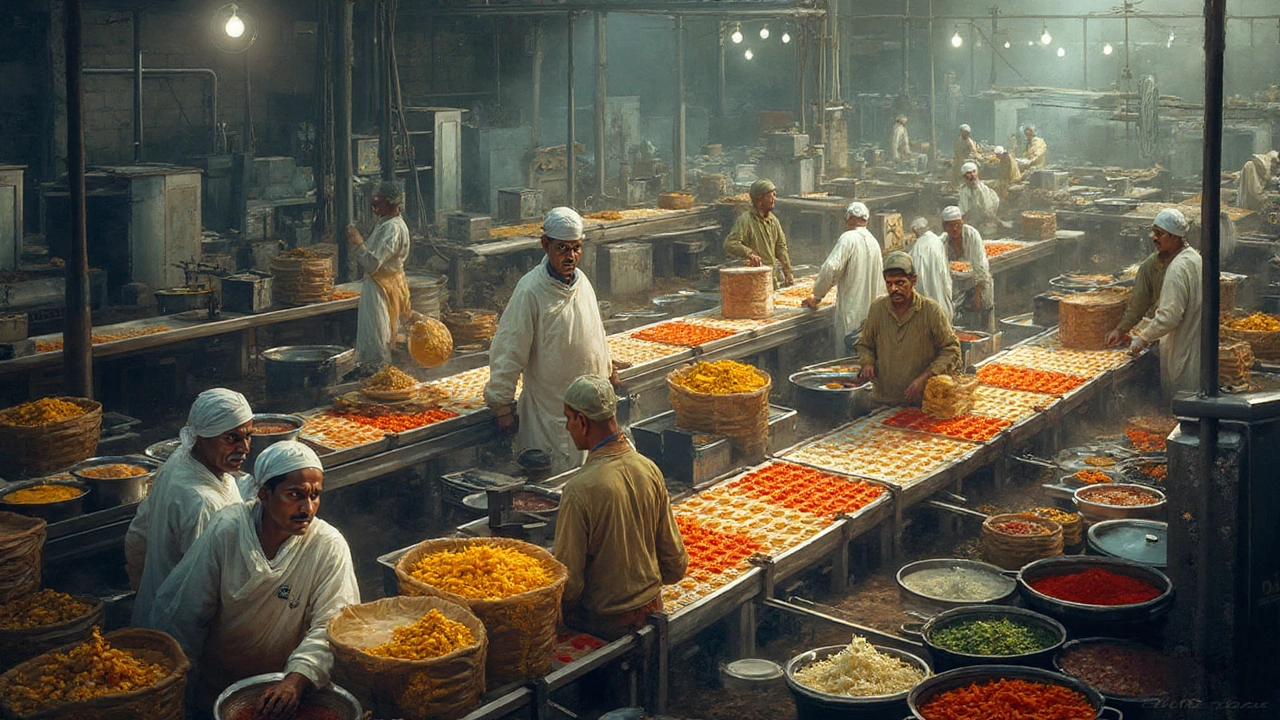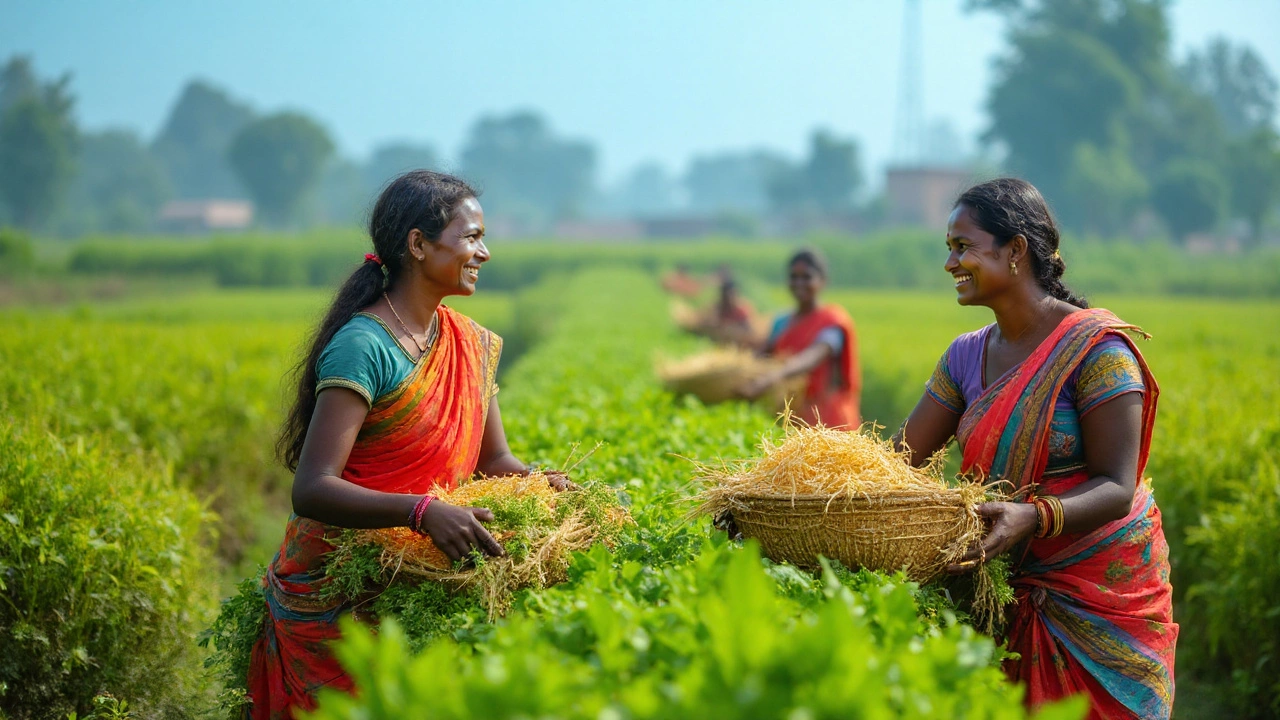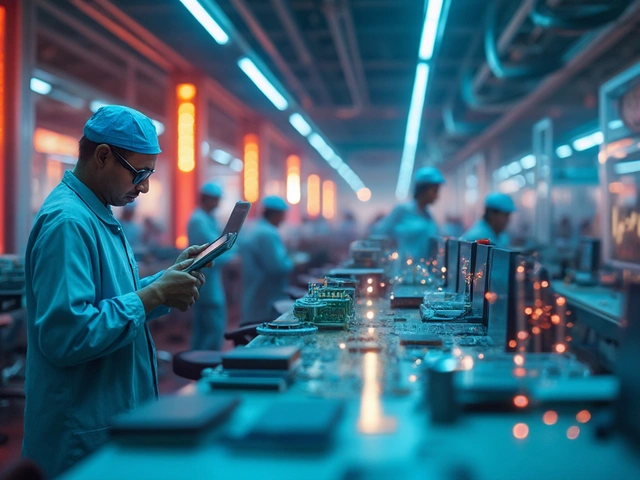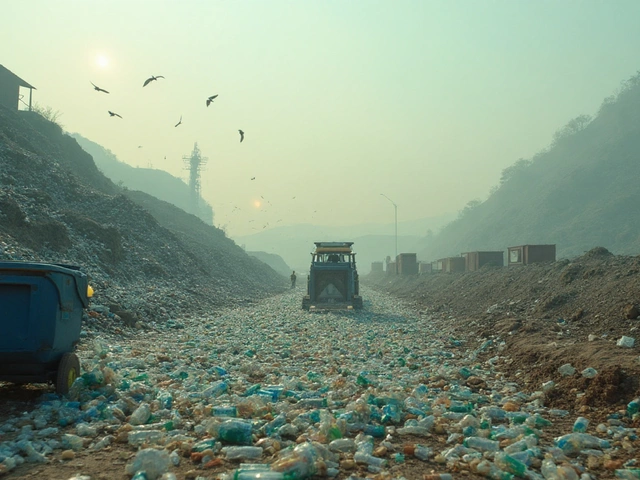Ever wondered what actually happens to that tomato before it becomes your jar of ketchup, or how corn gets transformed into that crispy bag of chips? Food doesn’t just magically appear on store shelves. There’s a whole journey your food takes—one that involves five major processing stages that decide everything from taste and safety, to how that food looks, lasts, and even smells. These stages aren’t just busywork—they’re the reason you can eat your yogurt without worrying about what grew inside overnight, or why your pasta sauce tastes identical every single time. Food processing is part science, part creativity, but a hundred percent essential to the modern plate.
The First Step: Raw Material Handling and Preparation
The very beginning is much less glamorous than the end product you see all decked out in shiny packaging. The minute crops are harvested or animals are slaughtered, things start moving fast. Freshness? It’s ticking down. Companies act quick, because spoilage can cost big. For fruits and veggies, sorting, washing, and trimming is the name of the game. Imagine thousands of carrots zipping along conveyor belts, scrubbed, and sorted by size or color. This step removes dirt, stones, bugs, and any bits you don’t want ending up in your smoothie. Meat or dairy go through their own set of checks and cleaning rituals, and believe me, cleanliness is way more intense than washing your hands before dinner—think industrial soaps, UV light treatments, and even ‘air showers’ to blow off stray particles.
In many factories, tech rules. High-speed cameras and sensors take snapshots of every potato on the line, tossing out bruised or funky ones in a blink. Even that stubborn bit of dirt you’d miss at home gets zapped. All this prep doesn’t just keep the ick away; it sets the stage for efficiency. One fun fact—water saved in food washing is recycled and even used to hydrate non-edible plants or clean factory floors, which saves tons of resources. If your kid ever asks how machines know which apples to keep, let them know artificial intelligence has a hand (or lens) in that too. Buddy, my dog, would love running around that place—so many smells, so little time.
Allergen control is also big during this first step. Cross-contamination? No thanks. Factories mark and clean areas to keep, say, peanuts from touching other foods. This is literally about life and death for some folks, so there’s no skimping. Then comes weighing and measuring—so everything downstream gets just the right amount of each ingredient, and the numbers add up for buyers and sellers. It’s a small miracle to see just how precise food prep is. Even oddball-shaped veggies sometimes get cut into perfect cubes or sticks, ready for the next phase.
Transformation: Processing and Modification
Now the fun science-y stuff starts. Processing means “making,” and here’s where food changes—a little or a lot. Think grinding wheat to flour, milking cows and turning it to cheese, or cooking up that tomato puree for your pizza sauce. There’s a mountain of methods: mixing, chopping, cooking, fermenting, drying, pasteurizing, or even freezing food extra fast. Each method has its own pros and quirks. Take UHT (ultra-high temperature) milk—just seconds at super high heat kills bacteria but keeps the milk taste almost the same, and it can last months unopened. Or, in the world of chips and snacks, “extrusion” blasts damp cornmeal through a press; out come puffed snacks in seconds. My son Arjun asked why chips all look the same—yep, you can thank these machines!
This stage can add ingredients like salt, sugar, spices, or preservatives, and gets creative with flavorings. It’s all about safety, uniformity, and taste. A good example—bread dough is mixed with yeast, flour, sugar, then let to rise before baking. Somewhere along here, vitamins or minerals might get tossed in (think iron-fortified cereal). Weirdly, popcorn kernels are processed to control size, so movie night doesn’t turn into an explosion of unpopped duds. There’s a surprisingly fine balance between making foods last and keeping them natural.
Tech plays a starring role again. Computer controls track temperature, humidity, acidity—because the difference between tasty golden fries and burnt potatoes is less than a minute or a few degrees. Newer “clean label” trends are leading companies to look for fewer synthetic additives and more kitchen-style processing steps. So if you spot a label that says “minimally processed,” it’s a brag about skipping as many steps as possible. But don’t be fooled—some “natural” foods need a tough process to stay safe, like cold-pressed juices that use high-pressure bursts to knock out microbes. And yes, your favorite salsas, soups, and packaged meals all got their flavors standardized and safety checked right about here.

Preservation: Keeping Food Safe and Fresh
Let’s be real—nobody wants milk that spoils in an afternoon or chips that go stale before you’ve barely opened the bag. Preservation is where food science flexes its muscles. The classic fridge and freezer at home are just the tip of the iceberg. Most food companies use tricks like canning, dehydration, freezing, salting or curing, sugar syrups, or even vacuum-packing. Each method targets a specific threat—bacteria, mold, moisture, oxygen, or all of the above. Canning, for example, was invented in the early 1800s so Napoleon’s armies could eat on long campaigns. Now, it’s everywhere—soups, beans, fruits, you name it.
For snacks and chips, it’s all about getting water out and sealing in freshness—ever noticed that big whoosh of air when you open a chip packet? That’s nitrogen gas, keeping things crispy. Even grandma’s jams and pickles are examples of home preservation, but scale that up to mega-factories with thousands of jars a minute. Modern tech uses ‘modified atmosphere packaging’—they swap regular air with special gas blends, slowing the staling process. Flash-freezing snaps ice crystals inside food so it doesn’t get mushy, and high-pressure processing (HPP) is a newish thing, zapping packaged juice with tons of pressure to crush bacteria but leave flavor and vitamins intact.
Check out these data points inside the food processing stages world:
| Method | Key Benefit | Common Foods | Max Shelf Life |
|---|---|---|---|
| Canning | Microbe-free, stable | Soups, beans, veggies | 2-5 years |
| Flash-Freezing | Texture, nutrients preserved | Meats, veggies, ready meals | 6-12 months |
| Vacuum Packing | No oxygen, less spoil | Deli meats, cheese, coffee | 3-12 months |
| HPP | Kills germs, keeps fresh | Juices, guacamole, deli meat | 1-2 months |
| Modified Atmosphere | Keeps crispness | Chips, pre-cut salad mixes | 1-2 weeks |
Safety is always front and center. By the time you get your yogurt, it’s been pasteurized, chilled, kept away from light, and sealed tight. Some preservation is as simple as a well-timed freeze or dry, but others use a whopper of tech—lasers, magnetic fields, ozone sprays. There’s even a big shift to less chemical-heavy methods due to health-conscious shoppers. If you’re reading the back of a food package and can’t pronounce half the stuff, you’re not alone. Tip: the fewer steps a food takes to stay safe, the less likely it’s loaded with extras (but it still has to hit those safety checks!).
Packing, Storage, and Getting Food to You
Now comes the final leg—the step everyone knows, but few think about. Packaging isn’t just about flashy fonts and colors. It does heavy lifting: keeping food safe, showing ingredients, blocking sunlight, stopping moisture, or oxygen from sneaking in. Some packs mean business, like double layers or vacuum-sealed trays, while others focus on keeping things green (biodegradable wrappers, anyone?). Did you know that almost 40% of food wasted each year actually happens after packaging, because of poor storage or mishandling? That’s wild, considering how much effort went into keeping it perfect up until that point.
Food gets stored at exact temperatures—cold, dry, or dark as needed. Warehouses run like clockwork: first in, first out, so older batches move first. Tracking systems (usually with barcode scans or RFID chips) make sure you’re never getting yogurt that should’ve expired two months ago. Quality checks never sleep. Random spot tests pull boxes off pallets and open them, just to sniff out any rogue bacteria, odours, or leaks. My son Arjun got a kick at a tour where robots zipped between aisles, lifting pallets three stories high. Not all superheroes wear capes, some just have forklift licenses.
Finally, food goes to trucks, trains, planes—yep, that canned pineapple on your shelf might have flown farther than you ever will. Timing is crucial; delays can ruin a batch. Labels must have accurate info: batch number, pack date, expiry, allergens, ingredients, and instructions. Mess that up, and products can get recalled. It all ends at the shelf, fridge, or freezer in your favorite store, waiting for a hungry shopper. Even then, shelf placement is an art—eye-level products move fastest, and brands jockey for that sweet spot. For smaller brands, winning shelf space can be the difference between boom or bust.
Point is, the journey from farm to fork is a whirlwind of science, checks, scrambles, and smart storage. Every stage matters. Next time you grab a snack or cook dinner, take a second to think about the marathon your food just ran to get there—and give a silent thank you to the unsung heroes of the food chain.








Write a comment